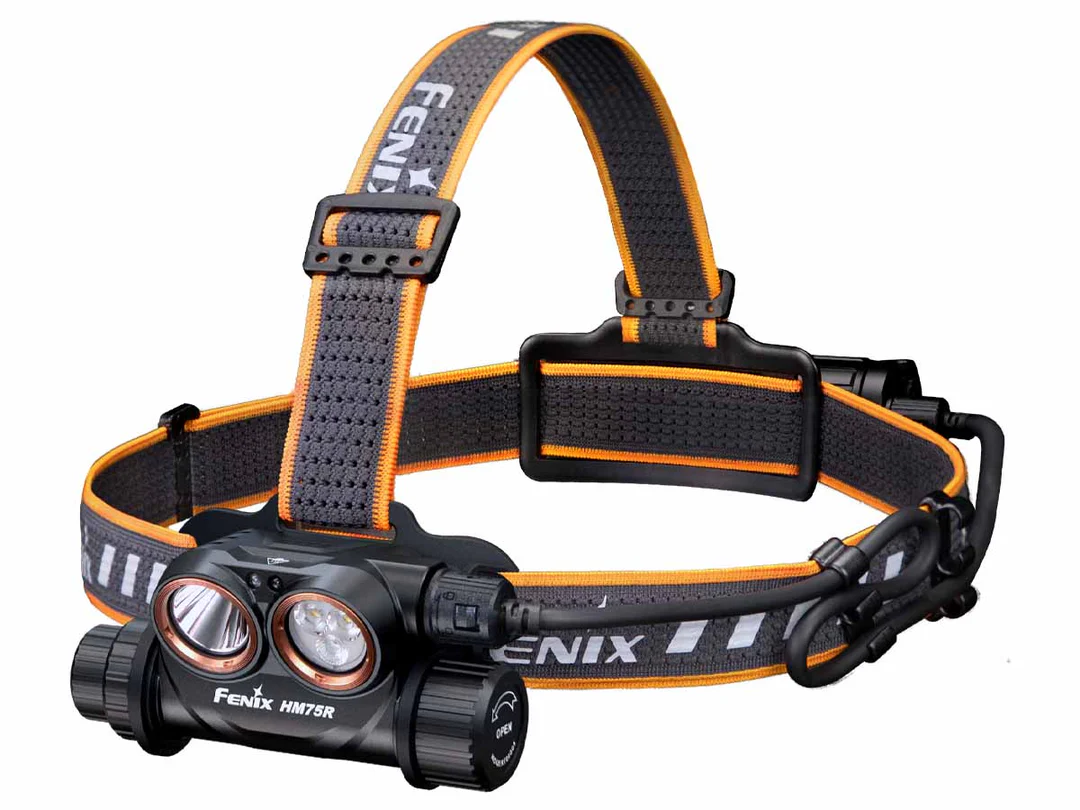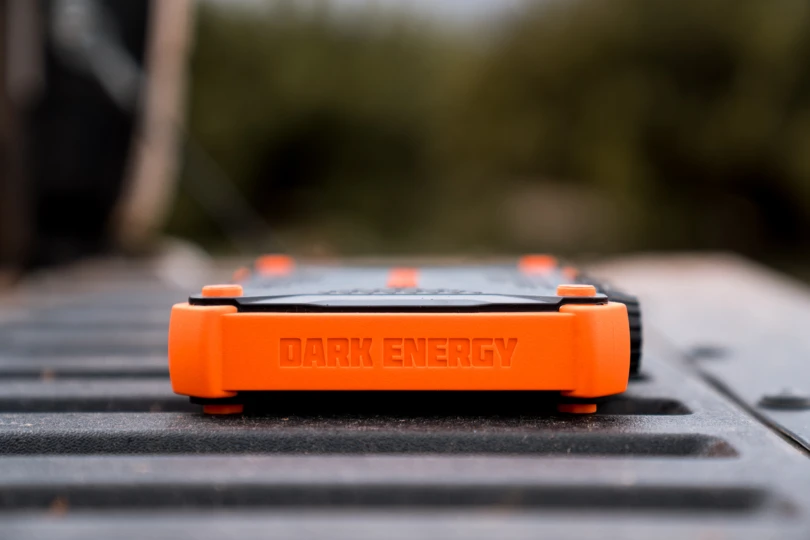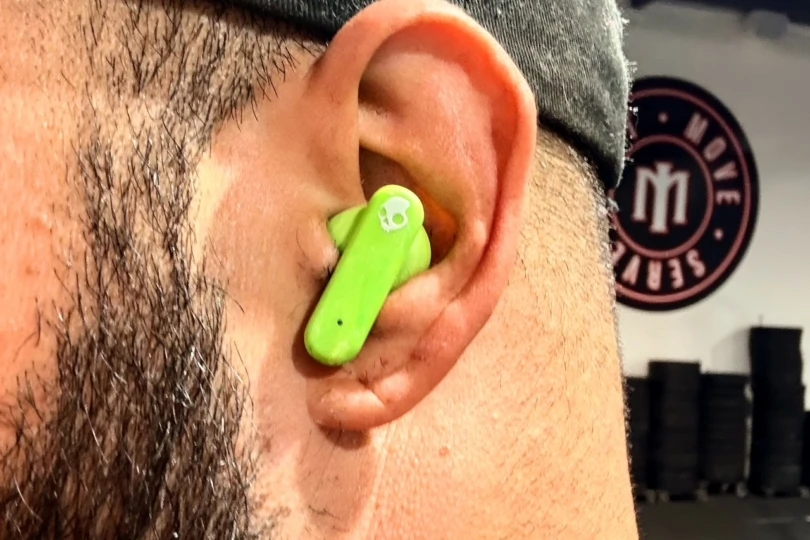If the Fenix HM75R stands out for any single reason, it would be its red light setting. Powerful enough to see objects clearly out to 52 feet and highly adjustable, this is the red light mode I’ve been craving.
But calling out one single feature on the HM75R does it a disservice. While many good headlamps are on the market, few stand out from the crowd. The Fenix HM75R is a big, burly beast of a headlamp that will outshine most others and do so with a wonderful interface, plus some cool bonus features that make it one of a kind.

In short: The Fenix HM75R sits apart from the crowd with a very powerful red light, a spotlight and floodlight in two color temperatures, and a battery extender that can even charge a cellphone. It’s one of the best powerful headlamps I’ve used and is balanced, comfortable, and easy to adjust. On the downside, it is heavy and expensive.
-
Battery life & charging
9.8
-
Beam quality & brightness
9.7
-
Durability
9.5
-
User interface & comfort
8.4
- Lumen output: 1,600
- Rechargeable: Yes, USB-C
- Burn time: 234 hrs. (low white); 365 hs. (red)
- Weight: 11.32 oz.
- Red light: Yes, variable
- Waterproof rating: IP68 (2m submersible)
Pros
- Excellent red light
- Two white light colors
- Long range spotlight
- Battery extender can power other electronics
- Very long runtime
Cons
- Heavy
- Expensive
Fenix HM75R Review
There are a lot of great headlamps. And as one of GearJunkie’s primary headlamp testers, I’ve seen or used most of them. But from time to time, one can really stand out from the crowd. And that was the case with the Fenix HM75R.
It’s a beast of a light that casts a powerful beam. I’ve been testing it since it launched in early April. For those who don’t mind a heavier headlamp (it weighs 11.32 ounces with the battery extender attached), it provides some of the best lighting I’ve experienced.
Let’s start the conversation with its two white light modes, spot and flood. The first thing I’d note is that these two lighting modes are very different from one another.

Beyond the traditional difference in the amount of focus, each lighting mode has a significantly different color temperature. The spotlight has a bright white 6,500K spotlight mode. It works great to illuminate objects at a long distance up to 223 m.
The floodlight, by comparison, is a much warmer white light at 4,000K. This light has more yellow and red hues, and thus provides a much more pleasant and accurate color rendering, meaning it will reveal colors more naturally.




It’s nice for closer work, and while I haven’t hunted with this light just yet, it should be fantastic for blood trailing. This light kicks out up to 400 lumens and gives a nice bright pool of light at a closer range.
Next, let’s look at the incredible red light mode. To me, this is a standout feature, as I use red a great deal in the outdoors. That’s because it helps maintain night vision and allows you to see natural lighting like stars and moonlight. It’s great for hunting, sailing, hiking, and around camp.




But most headlamps have very weak red lights that are good only for 5 to maybe 10 feet. Not this one! The HM75R’s whopper of a red light kicks out up to 120 lumens of red light, enough to see about 50 feet. It’s the best red light I’ve used in a headlamp.
All these lighting modes have very competitive runtimes, thanks in part to the serious battery capacity packed into the headlamp and the battery extender. You can expect about 18 hours of light running at medium spotlight of 350 lumens. Like almost all headlamps, the regulated power will eventually dwindle, but not for nearly 12 hours. Fenix provides the runtime examples below.
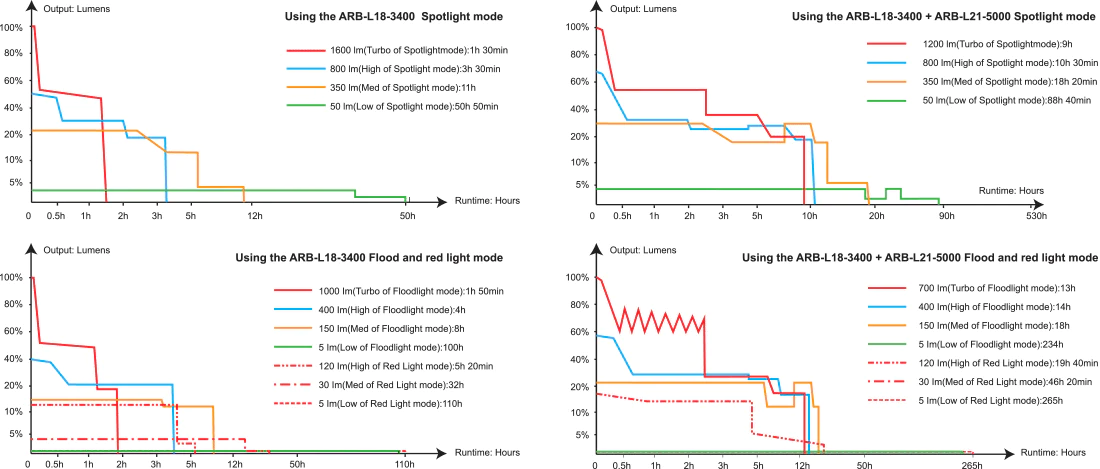

(Photo/Fenix)
Fenix HM75R User Interface
The user interface is about as simple as they get. A dial on the right side of the headlamp twists through three modes: red, spotlight, and floodlight. In each mode, scroll through low, medium, high, and turbo by pressing a button on the end of the dial. That’s it!
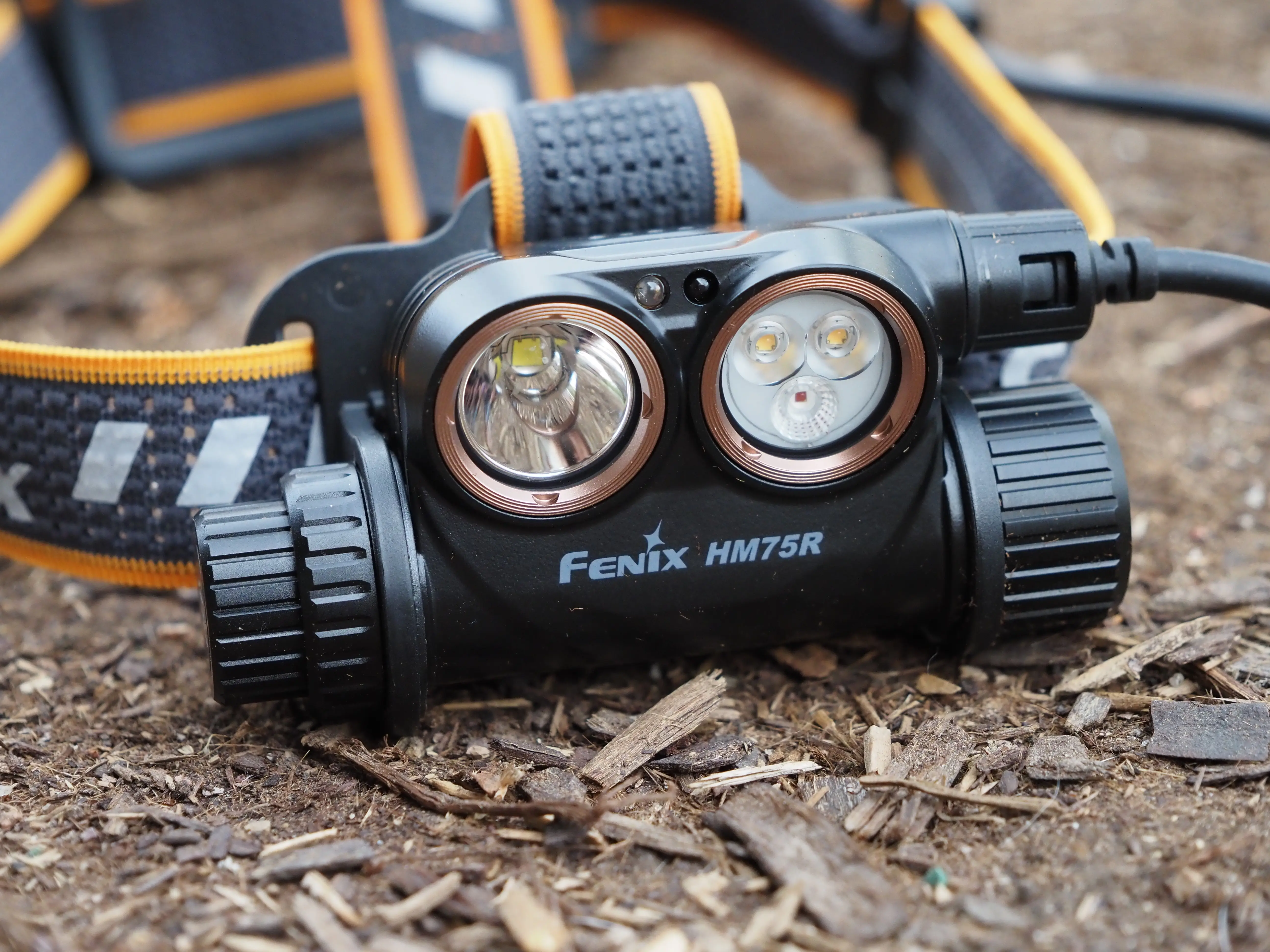



It doesn’t get much simpler. This interface is usable with gloves, a nod to the noted industrial capabilities of this headlamp. If you’re keeping track, the HM75R is IP68-rated, meaning it’s fully submersible to 2 m for 30 minutes. For most headlamps, that’s all you’ll ever need. It has a tough magnesium body drop-tested to 2 m.
Battery Extender Pack: A Major Bonus
Overall, I think this is a great headlamp. But I’m breaking out the “battery extender” feature as a separate element of this review. That’s because the headlamp works fine without the extender attached. It’s entirely optional.
Second, the battery extender also works as a standalone battery pack with a USB-C output that can power cellphones or whatever you wish.




The battery extender attaches to the back of the headlamp strap. Sitting opposite the main headlamp, the extender balances the system nicely, although it does add 4.41 ounces to the 6.95-ounce headlamp, resulting in a system that weighs more than 11 ounces (a full 11.36 ounces on my scale).
Is all this weight useful for you? It comes down to the user. To me, having a headlamp with an astoundingly long runtime is awesome. And with the HM75R, you can expect 350 lumens for more than 18 hours straight.
I wouldn’t rely on the battery extender as my primary extra power source in the wild, but charging other devices from your headlamp in an emergency is a great extra utility.
Yes, the HM75R is heavy. And yes, it’s quite expensive, ringing in at $170. There are a lot of great headlamps on the market that will serve you better if you don’t need the power, longevity, or range of lights of this industrial beast.




For some, these downsides can, and should be, deal breakers. The weight will be significant on your head and get tiresome after a few hours. And it might sound like nitpicking, but an extra strap over the top of your head will almost certainly mess up your hair. This one is best worn with a hat or helmet.
On the other hand, for those who need powerful spotlights, eye-pleasing floodlights, and a very useful, bright red light, the HM75R is the best heavy-duty headlamp I’ve tested. I can’t wait to get it in the mountains for testing during the long fall nights of hunting season.

